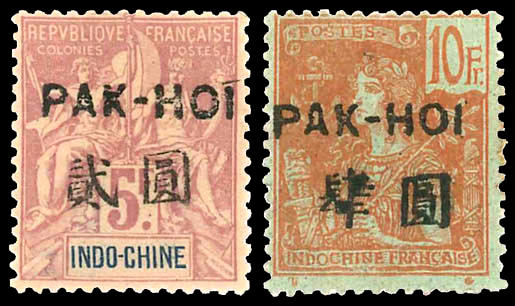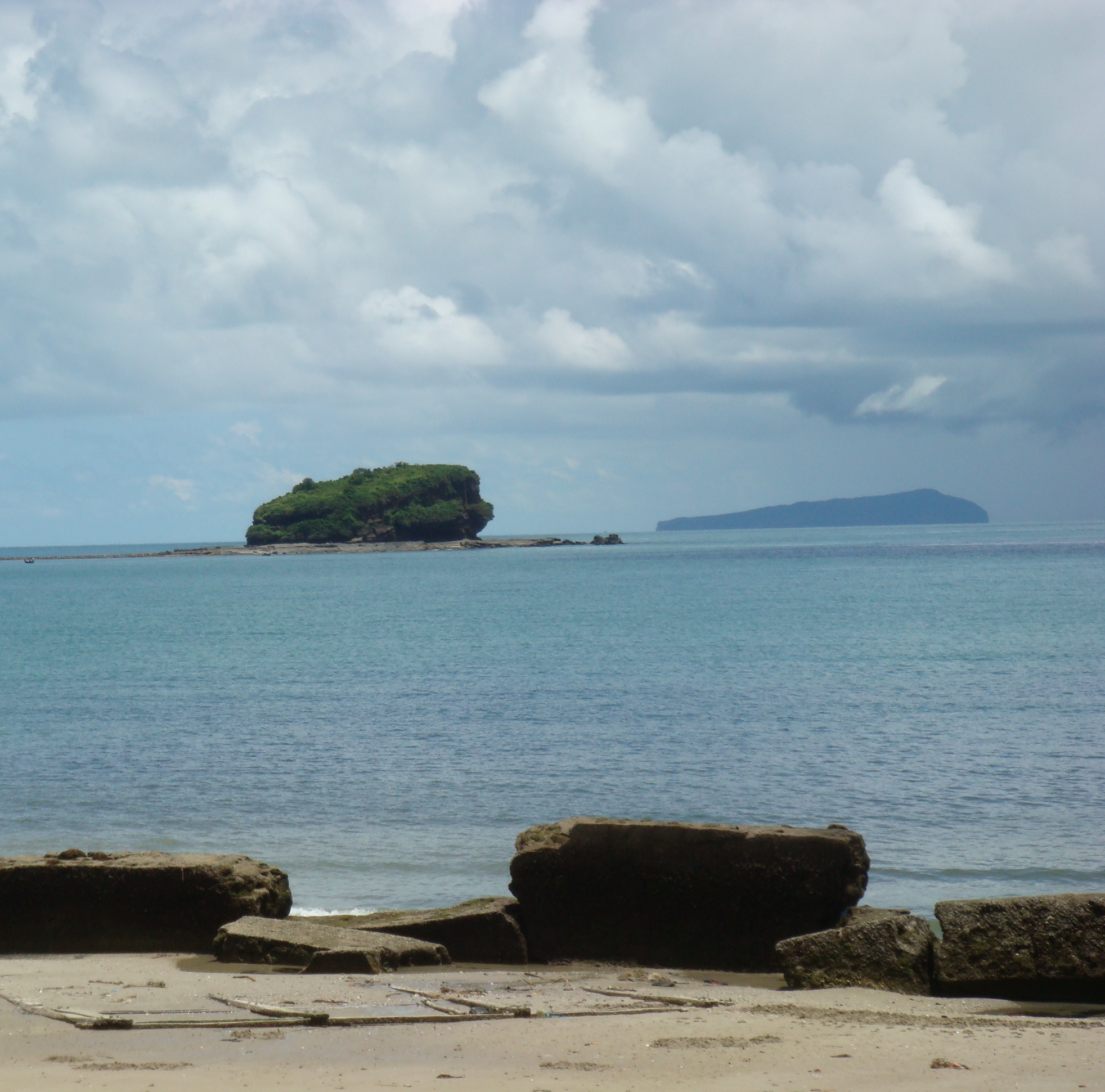|
Xieyang Island
Xieyang Island () is a Chinese island in the Gulf of Tonkin, located southeast of Weizhou Island. Administratively, it, along with Weizhou Island, forms the town of Weizhou, in Haicheng District Haicheng (; za, Haijcwngz) is the seat of the city of Beihai, Guangxi, People's Republic of China. It has an area of and a population of 240,000 . Administrative divisions Haicheng District is divided into 7 subdistricts and 1 town: Subdistr ..., Beihai, Guangxi. It has an area of only and is of volcanic origin. The island may be described as appearing like a goat with its front legs crouched, and so in ancient times was also called "". It is one of the tourist attractions of Beihai. Along with Weizhou Island, waters around Xieyang Island was discovered in 2015 to be seasonally frequented by Bryde's whales, and the area has become the first acknowledged location among mainland coasts of China to have regular migrations of large cetaceans.Bingyao Chen, Lin Zhu, Thomas A. J ... [...More Info...] [...Related Items...] OR: [Wikipedia] [Google] [Baidu] |
Guangxi
Guangxi (; ; Chinese postal romanization, alternately romanized as Kwanghsi; ; za, Gvangjsih, italics=yes), officially the Guangxi Zhuang Autonomous Region (GZAR), is an Autonomous regions of China, autonomous region of the People's Republic of China, located in South China and bordering Vietnam (Hà Giang Province, Hà Giang, Cao Bằng Province, Cao Bằng, Lạng Sơn Province, Lạng Sơn, and Quảng Ninh Provinces) and the Gulf of Tonkin. Formerly a Provinces of China, province, Guangxi became an autonomous region in 1958. Its current capital is Nanning. Guangxi's location, in mountainous terrain in the far south of China, has placed it on the frontier of Chinese civilization throughout much of History of China, Chinese history. The current name "Guang" means "expanse" and has been associated with the region since the creation of Guang Prefecture in 226 AD. It was given Administrative divisions of the Yuan dynasty, provincial level status during the Yuan dynasty, but ev ... [...More Info...] [...Related Items...] OR: [Wikipedia] [Google] [Baidu] |
Beihai
Beihai (; Postal romanization: Pakhoi) is a prefecture-level city in the south of Guangxi, People's Republic of China. Its status as a seaport on the north shore of the Gulf of Tonkin has granted it historical importance as a port of international trade for Guangxi, Hunan, Hubei, Sichuan, Guizhou, and Yunnan. Between the years 2006 and 2020, Beihai is predicted to be the world's fastest growing city. Beihai has a large shipyard, but most of the money generated in the city is derived from trade. In addition, it governs the small islands of Weizhou Island, Weizhou and Xieyang Island, Xieyang, and is directly west of Leizhou Peninsula. Subdivisions Beihai contains three districts and one county, which are subdivided into five urban sub-districts, 23 towns, 3 townships, 87 neighborhood committees, 343 village committees. (see also Administrative divisions of the People's Republic of China#Levels) * Haicheng District () * Yinhai District () * Tieshangang District () * Hepu County ( ... [...More Info...] [...Related Items...] OR: [Wikipedia] [Google] [Baidu] |
Haicheng District
Haicheng (; za, Haijcwngz) is the seat of the city of Beihai, Guangxi, People's Republic of China. It has an area of and a population of 240,000 . Administrative divisions Haicheng District is divided into 7 subdistricts and 1 town: Subdistricts: * Zhongjie Subdistrict (中街街道), Dongjie Subdistrict (东街街道), Xijie Subdistrict (西街街道), Haijiao Subdistrict (海角街道), Dijiao Subdistrict (地角街道), Gaode Subdistrict (高德街道), Yima Subdistrict (驿马街道) The only town is Weizhou (涠洲镇) See also * List of administrative divisions of Guangxi References External links Official website(in Simplified Chinese Simplification, Simplify, or Simplified may refer to: Mathematics Simplification is the process of replacing a mathematical expression by an equivalent one, that is simpler (usually shorter), for example * Simplification of algebraic expressions, ...) County-level divisions of Guangxi Beihai {{Guangxi-geo-s ... [...More Info...] [...Related Items...] OR: [Wikipedia] [Google] [Baidu] |
Weizhou, Guangxi
Weizhou () is a town of Haicheng District, Beihai, Guangxi, People's Republic of China. The town comprises two Gulf of Tonkin islands: Weizhou Island and a smaller Xieyang Island (斜阳岛), covering an area of and with a population of 15,900. It includes 2 neighborhood committees, 9 village committees. , it has 2 residential communities (社区) and 9 villages under its administration. See also * List of township-level divisions of Guangxi This is a list of township-level divisions of Guangxi Zhuang Autonomous Region, People's Republic of China (PRC). After province, prefecture, and county-level divisions, township-level divisions constitute the formal fourth-level administr ... References Towns of Guangxi Beihai {{Guangxi-geo-stub ... [...More Info...] [...Related Items...] OR: [Wikipedia] [Google] [Baidu] |
Island
An island (or isle) is an isolated piece of habitat that is surrounded by a dramatically different habitat, such as water. Very small islands such as emergent land features on atolls can be called islets, skerries, cays or keys. An island in a river or a lake island may be called an eyot or ait, and a small island off the coast may be called a holm. Sedimentary islands in the Ganges delta are called chars. A grouping of geographically or geologically related islands, such as the Philippines, is referred to as an archipelago. There are two main types of islands in the sea: continental and oceanic. There are also artificial islands, which are man-made. Etymology The word ''island'' derives from Middle English ''iland'', from Old English ''igland'' (from ''ig'' or ''ieg'', similarly meaning 'island' when used independently, and -land carrying its contemporary meaning; cf. Dutch ''eiland'' ("island"), German ''Eiland'' ("small island")). However, the spelling of the word ... [...More Info...] [...Related Items...] OR: [Wikipedia] [Google] [Baidu] |
Gulf Of Tonkin
The Gulf of Tonkin is a gulf at the northwestern portion of the South China Sea, located off the coasts of Tonkin (northern Vietnam) and South China. It has a total surface area of . It is defined in the west and northwest by the northern coastline of Vietnam down to the Hòn La Island, in the north by China's Guangxi Zhuang Autonomous Region, and to the east by the Leizhou Peninsula and Hainan Island. Etymology The name ''Tonkin'', written "" in Hán-Nôm characters and in the Vietnamese alphabet, means "eastern capital", and is the former toponym for Hanoi, the present capital of Vietnam. It should not to be confused with Tokyo, which is also written "" and also means "eastern capital". During the French colonial era, the northern region of today’s Vietnam was called ''Tonkin''. ''Bắc Bộ'' is the native Vietnamese name of Tonkin. The bay's Vietnamese and Chinese names – and , respectively – both mean "Northern Bay". History Gulf of Tonkin incident On 4 ... [...More Info...] [...Related Items...] OR: [Wikipedia] [Google] [Baidu] |
Weizhou Island
Weizhou Island () is a Chinese island in Beibu Gulf in the Gulf of Tonkin. The largest island of Guangxi Zhuang Autonomous Region, Weizhou is west of Leizhou Peninsula, south of Beihai, and east of Vietnam. Administratively, it is part of Weizhou Town, Haicheng District of Beihai City. The name derives from Chinese 潿 ''wéi'' ("still water") and 洲 ''zhōu'' ("river islet"). Geography Its north–south length is , east–west . The coast is , with of sandy beach. Weizhou rises in the south, where Nanwan Port (南灣港; pinyin: nánwān gǎng) is located. Coral reefs have been established around the island. Climate Geology Weizhou Island is China's youngest volcanic island. Its origin is probably from a mantle plume that rose 50–32 million years ago, as a result from the collision of the Indian and Eurasian plates. When the plume reached the asthenosphere, it helped to create the South China Sea by the plume's lateral flow. An evidence that the plume still exists ... [...More Info...] [...Related Items...] OR: [Wikipedia] [Google] [Baidu] |
Bryde's Whale
Bryde's whale ( Brooder's), or the Bryde's whale complex, putatively comprises three species of rorqual and maybe four. The "complex" means the number and classification remains unclear because of a lack of definitive information and research. The common Bryde's whale (''Balaenoptera brydei'', Olsen, 1913) is a larger form that occurs worldwide in warm temperate and tropical waters, and the Sittang or Eden's whale (''Balaenoptera edeni'', Anderson, 1879) is a smaller form that may be restricted to the Indo-Pacific. Also, a smaller, coastal form of ''B. brydei'' is found off southern Africa, and perhaps another form in the Indo-Pacific differs in skull morphology, tentatively referred to as the Indo-Pacific Bryde's whale. The recently described Omura's whale (''B. omurai'', Wada et al. 2003), was formerly thought to be a pygmy form of Bryde's, but is now recognized as a distinct species. Rice's whale (''B. ricei''), which makes its home solely in the Gulf of Mexico, was once co ... [...More Info...] [...Related Items...] OR: [Wikipedia] [Google] [Baidu] |
Islands Of Guangxi
An island or isle is a piece of subcontinental land completely surrounded by water. Very small islands such as emergent land features on atolls can be called islets, skerries, cays or keys. An island in a river or a lake island may be called an eyot or ait, and a small island off the coast may be called a holm. Sedimentary islands in the Ganges Delta are called chars. A grouping of geographically or geologically related islands, such as the Philippines, is referred to as an archipelago. There are two main types of islands in the sea: continental islands and oceanic islands. There are also artificial islands (man-made islands). There are about 900,000 official islands in the world. This number consists of all the officially-reported islands of each country. The total number of islands in the world is unknown. There may be hundreds of thousands of tiny islands that are unknown and uncounted. The number of sea islands in the world is estimated to be more than 200,000. The t ... [...More Info...] [...Related Items...] OR: [Wikipedia] [Google] [Baidu] |
Islands Of The South China Sea
An island (or isle) is an isolated piece of habitat that is surrounded by a dramatically different habitat, such as water. Very small islands such as emergent land features on atolls can be called islets, skerries, cays or keys. An island in a river or a lake island may be called an eyot or ait, and a small island off the coast may be called a holm. Sedimentary islands in the Ganges delta are called chars. A grouping of geographically or geologically related islands, such as the Philippines, is referred to as an archipelago. There are two main types of islands in the sea: continental and oceanic. There are also artificial islands, which are man-made. Etymology The word ''island'' derives from Middle English ''iland'', from Old English ''igland'' (from ''ig'' or ''ieg'', similarly meaning 'island' when used independently, and -land carrying its contemporary meaning; cf. Dutch ''eiland'' ("island"), German ''Eiland'' ("small island")). However, the spelling of the word w ... [...More Info...] [...Related Items...] OR: [Wikipedia] [Google] [Baidu] |
Volcanic Islands
Geologically, a high island or volcanic island is an island of volcanic origin. The term can be used to distinguish such islands from low islands, which are formed from sedimentation or the uplifting of coral reefs (which have often formed on sunken volcanos). Definition and origin There are a number of "high islands" that rise no more than above sea level, often classified as "islets or rocks", while some low islands, such as Banaba, Henderson Island, Makatea, Nauru, and Niue, as uplifted coral islands, rise over above sea level. The two types of islands are often found in proximity to each other, especially among the islands of the South Pacific Ocean, where low islands are found on the fringing reefs that surround most high islands. Volcanic islands normally arise above a hotspot. Habitability High islands above a certain size usually have fresh groundwater Groundwater is the water present beneath Earth's surface in rock and soil pore spaces and in the fractu ... [...More Info...] [...Related Items...] OR: [Wikipedia] [Google] [Baidu] |





